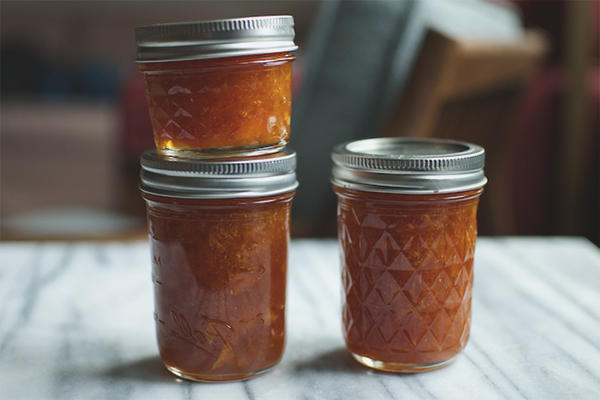The content of the article
The age of technological progress leaves its mark on society. More and more housewives are in search of optimized bypass items, be it multicookers, electric kettles or blenders. The products of this kind are twisted caps, which greatly simplify life. Of course, seamers do not depart into the past, many still close pickles with their help. However, more modern housewives prefer not to bother. Consider the important aspects in order.
Operating principle of screw caps
To date, screw caps are widely used in America and Europe. Products of this kind are called “Twist-Off”, their principle of operation is quite transparent.
The inner side of the cover has a slippery polymer coating, it serves as a gasket. As a result of exposure to high temperatures, this element swells, significantly increasing in thickness. This move allows you to press the lid to the mouth of the can as tightly as possible, preventing the ingress of air and, as a result, damage to the final product.
Thanks to the powerful sealing screw caps are suitable for preserving jams, pickles, canned goods, etc. When the temperature decreases, the gasket decreases, which is accompanied by a click. The lid sags deep into the banks, such a move creates a vacuum effect. Before rolling pickles using similar caps, they need to be well heated.
Technology of seaming cans with screw caps
Any housewife wants to get the correct answer to the question: "How to properly close the banks with lids" Twist-Off "?". At the same time, the process is not difficult. However, like any other case, includes certain features that must be considered. Spinning does not take much time.
- First of all, inspect each cover for the presence, or rather the absence of various defects. The surface of the cover should not have “bugs” of rust, strong dents (if possible exclude such specimens at all), small and large scratches.
- After you have examined the covers, they must be sterilized. The procedure is carried out by thermal treatment. Pour running water into the enameled pan, or better filtered water, put it on the stove, bring to a boil. When the first bubbles appear, send the lid to the tank, reduce the heat to the middle mark, cook the household items for a quarter of an hour.
- After the specified period, spread the cotton towel on a flat surface, remove the lids with kitchen tweezers, leave to dry completely. Sterilization should be carried out immediately before conservation.
- After cleaning the covers, proceed to tightening. Pour the desired contents into the jars, place the lid on the top of the neck, then tighten the threads. To check the tightness of the rolled-up container, turn the hot can upside down, cover with a towel and leave to cool completely.
- If the rim does not become wet, then the preservation was successful. In this case, the banks must be attributed to the cellar or cellar for long-term storage.
How to store cans with screw caps
- Cans clogged with screw caps should be stored in a room with optimum humidity (up to 40%) and stable temperature conditions. The ideal option would be a pantry with ventilation, a dry basement or a glazed loggia. Give preference to rooms or rooms that are well ventilated. Such a course will prevent the formation of mold that appears due to condensation. Important! Do not store jars with screw caps in the cellar, as in such a room too high humidity. Also, you can not keep the tank on the open balcony, where the temperature is often subject to oscillation.
- If the jars with small homemade twists (canned food, jam, etc.), store them on the bottom shelf of the refrigerator or in the cellar. This category refers to compounds that are prone to fast fermentation, so the room should be cool.
- Do not rush to send cans with seals for long-term storage immediately after conservation.First you need to put them neck down, wrap a warm cloth and cool to room temperature. After performing a leak test, ensure that the cap is not swollen. If everything is in order, the capacity can be moved. Homemade pickles are stored in banks with such covers for half a year or longer.
- The service life of screw caps is quite high under all operating conditions. If you did not find any rust on the product, dents, large scratches, covers are reusable. In cases where you scrape the lacquer coating with a hard sponge, the product will quickly become unusable. As a rule, the duration of service varies from 3 to 5 years.
How to open a jar with a screw cap
There are cases when even the most experienced housewives complain that they cannot open a jar with a screw cap.
The difficulty lies in the inability to ask the representative of a strong half of humanity, who is not always nearby. It also does not want to spoil the product, making a hole in the surface with a knife to release excess air.
To simplify the procedure, turn the container with the neck down, strike the bottom several times with your palm. After that, try to unscrew the cover, if necessary, repeat the procedure.
It is easy to roll up cans with screw caps, if you have sufficient knowledge about the technology available. To begin with, sterilize the caps, pour the contents into containers, immediately tighten them along the threads. Store indoors with a stable temperature regime, where humidity varies within acceptable limits.
Video: choose jars and lids so that conservation does not explode











To send